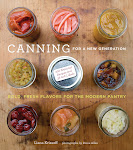Last week was Mr. Chalmers's birthday, but as he does every year he spent it at a conference. When he comes home today we'll have chocolate cupcakes with chocolate frosting—I think he asked for that wacky combination a couple months ago, and anyway he's right that I never make chocolate desserts, so I thought this was a good excuse. (It's all fruit and spice around here.) I don't know much about chocolate cake or frosting, so I posted a query on Chowhound asking for the best chocolate frosting recipes ever. It paid off:
this is the chocolate frosting I'll use till my dying day (although I have enough left over to last that long in the freezer, assuming it freezes okay—or, rather, thaws okay). It's very chocolatey, not too sweet, not grainy, not greasy or fatty-tasting like a buttercream can be, and not as dense as a ganache. It spreads easily, and stiffens as it cools on the cake but does not become crusty like a lot of frostings do. In short, it's perfect. I used a random combination of Ghirardelli milk and semisweet chocolates, plus a little over half a pound of good bittersweet. Here's a shortened version of the recipe:
Chocolate sour cream frosting: Melt about 2 pounds chocolate in a double boiler. Remove from the heat and stir in about 3 cups sour cream and 1/2 teaspoon vanilla extract. Frost cake immediately. Makes about 4 cups.The
cake recipe I used happened to be very good too. Very rich and moist, but light and tender. I used that crazy "Special Dark" Dutch-process Hershey's cocoa powder, and the cakes are pitch black. (Other things I've made with that stuff look too weird and dark, not like other Dutch-process cocoa powder I've used, so I'm glad to have been able to use up 3/4 cup of it this morning.) This recipe made twenty-four cupcakes.
 A lot of my pictures these days are taken when it's still dark out; hence the bad lighting.
A lot of my pictures these days are taken when it's still dark out; hence the bad lighting. The gravlax is ready! Following (sort of) Ruhlman and Polcyn in
Charcuterie, I cured a pretty piece of wild king salmon from Your Dekalb Farmer's Market in brown sugar, salt, a little black pepper, and lots of dill—wrapped in plastic and weighted down—for a little over two days. I know approximately as much about gravlax as I do about chocolate cake, but the little schnibbley I took from the thin end seemed a bit too hard and maybe too sweet. It's probably just that I expect it to taste like smoked salmon—lox—a completely different thing altogether. (The Chalmerses will make lox as soon as we have the smokehouse built. I've bookmarked something called KountryLife.com, so you know I'm serious. I did not, however, bookmark EndTimesReport.com.) I think it'll be nice with the mustard sauce I threw together this morning, and thin slices of pumpernickel, topped with strips of the skin that have been crisped and blackened in a hot skillet.
 Layer of brown sugar, salt, and pepper mixture, then the salmon fillet skin side down, then more sugar mixture, then dill.
Layer of brown sugar, salt, and pepper mixture, then the salmon fillet skin side down, then more sugar mixture, then dill. Salmon wrapped tightly in plastic. The juices will run out into the pan, in effect becoming a brine.
Salmon wrapped tightly in plastic. The juices will run out into the pan, in effect becoming a brine.
 Weighted down with cans in the fridge, where the salmon spent about two days.
Weighted down with cans in the fridge, where the salmon spent about two days.
 Salmon unwrapped, rinsed off, and patted dry.
Salmon unwrapped, rinsed off, and patted dry.
 Mustard sauce for gravlax: Whisk together about 1/3 cup crème fraîche, 1 tablespoon grainy mustard, and a touch of honey to taste. Stir in about 1 tablespoon snipped fresh dill.
Mustard sauce for gravlax: Whisk together about 1/3 cup crème fraîche, 1 tablespoon grainy mustard, and a touch of honey to taste. Stir in about 1 tablespoon snipped fresh dill.
Yes, I'd had breakfast and made cupcakes and mustard sauce and finished the gravlax before it was time to feed the dogs at 6 this morning. The bug is up and ready to play by 3:30 lately, whether she goes to bed at 4:30 or 7 the night before. These last few dark mornings have given me time to think about how to re-broach the subject of the floodlight the neighbors have decided to point directly at our house and leave on twenty-four hours a day. When I asked about it last week, the guy said it was
for security purposes. Is there any specific threat that he's concerned about? Yes, he said, as a matter of fact
there are black people who live in trailers and small houses down the road, and they
deal drugs on the corner, and sometimes they ride by on four-wheelers.
Happy birthday, sweetheart, and welcome home.
























